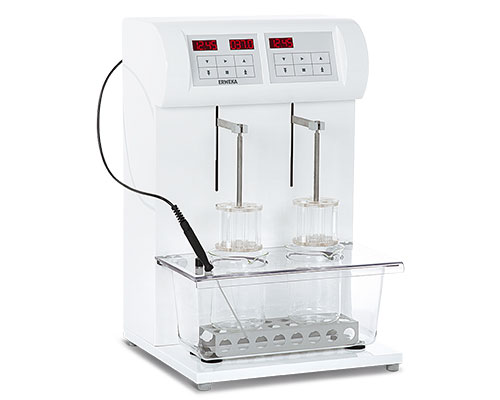

Hydrodynamic studies in dissolution apparatuses were carried out by researchers over the past few years with both experimental methods and numerical modeling such as Computational Fluid Dynamics (CFD). The designs of the dissolution apparatuses and the ways of operating dissolution apparatuses have huge impacts on the hydrodynamics, thus the performances. The performances of dissolution apparatuses are highly dependent on hydrodynamics due to the nature of dissolution testing. The dissolution medium within the vessels are heated to 37 ☌ with an acceptable difference of ± 0.5 ☌ An apparatus is used on solution within the vessels for a predetermined amount of time which depends on the method for the particular drug. The vessels of the dissolution method are usually either partially immersed in a water bath solution or heated by a jacket.

In United States Pharmacopeia (USP) General Chapter Dissolution, there are four dissolution apparatuses standardized and specified. Thus, the dissolution testing which is conducted in dissolution apparatus must be able to provide accurate and reproducible results.ĭifferent types of Dissolution Units: A Water-bath unit equipped with USP Dissolution Apparatus 2 - Paddle (Top-left), A amber vessel water bath unit that has been equipped with USP Dissolution Apparatus 1 without baskets being placed on yet (Top-right), and a dissolution unit that uses a heating jacket (bottom) Analytical data from drug dissolution testing are sufficient in many cases to establish safety and efficacy of a drug product without in vivo tests, following minor formulation and manufacturing changes (Qureshi and Shabnam, 2001). The main objective of developing and evaluating an IVIVC is to establish the dissolution test as a surrogate for human studies, as stated by the Food and Drug Administration (FDA). (iii) Product compliance and release decisions: during routine manufacturing, dissolution outcomes are very often one of the criteria used to make product release decisions.

(ii) Equivalence decisions: during generic product development, and also when implementing post-approval process or formulation changes, similarity of in vitro dissolution profiles between the reference product and its generic or modified version are one of the key requirements for regulatory approval decisions. There are three typical situations where dissolution testing plays a vital role: (i) formulation and optimization decisions: during product development, for products where dissolution performance is a critical quality attribute, both the product formulation and the manufacturing process are optimized based on achieving specific dissolution targets. In the pharmaceutical industry, drug dissolution testing is routinely used to provide critical in vitro drug release information for both quality control purposes, i.e., to assess batch-to-batch consistency of solid oral dosage forms such as tablets, and drug development, i.e., to predict in vivo drug release profiles.


 0 kommentar(er)
0 kommentar(er)
